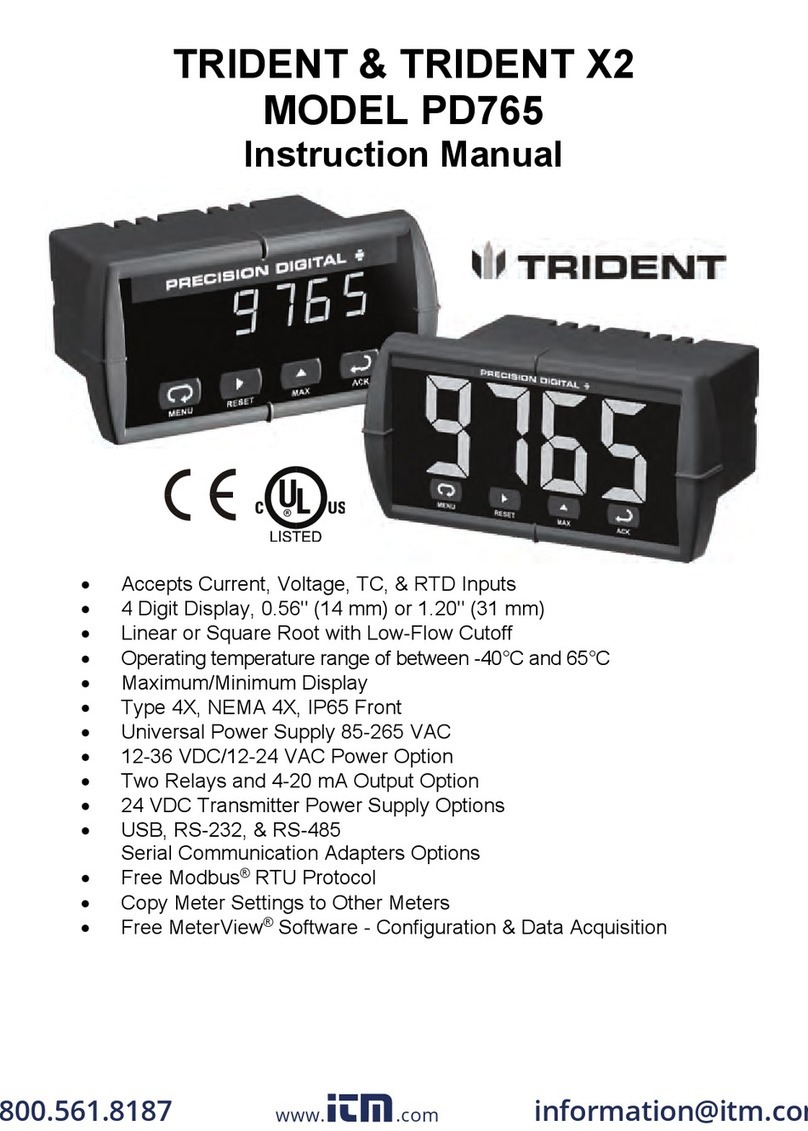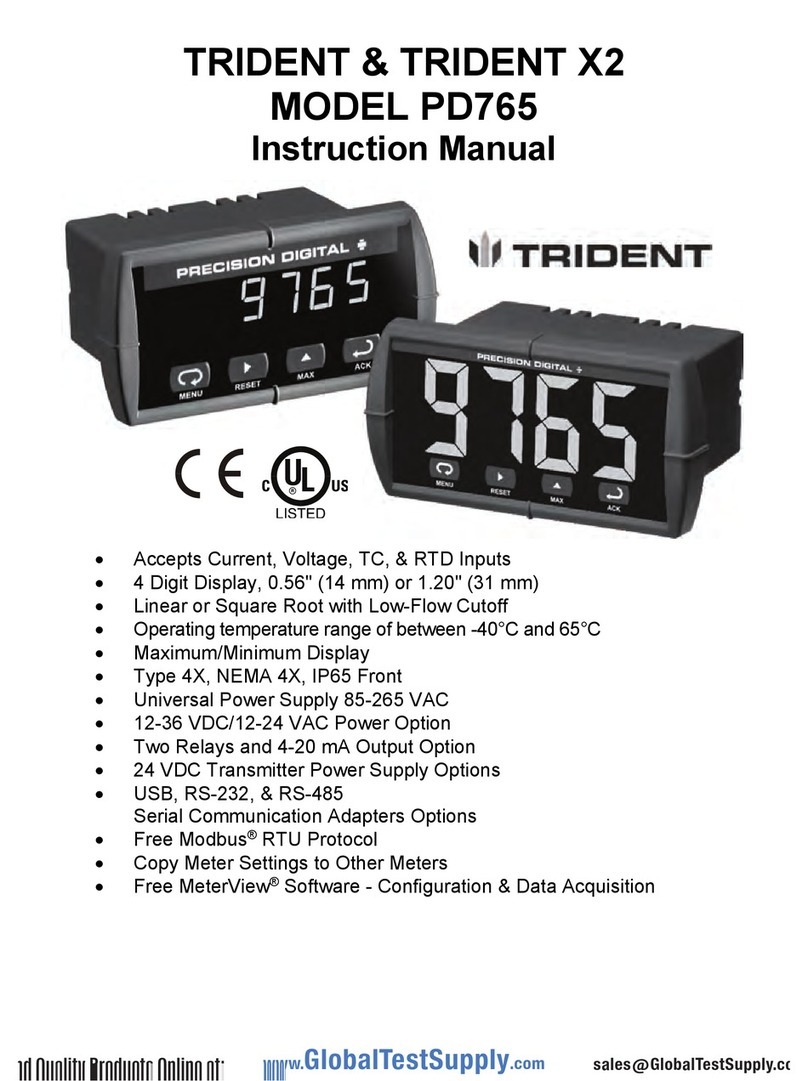GU_TRIDENT_V_1_20_EN 2/47
CONTENTS
CHAPTER 1 - TRIDENT OVERVIEW..........................................................................................................................................................4
1.1 USING TRIDENT ............................................................................................................................................................................4
1.2 GENERAL DESCRIPTION .............................................................................................................................................................5
1.2.1 Functions..............................................................................................................................................................................5
1.2.2 Recordings............................................................................................................................................................................6
1.3 TRIDENT 3U3I ET 1U1I..................................................................................................................................................................7
1.4 MANUAL CONTENTS ...................................................................................................................................................................7
CHAPTER 2 - REFERENCE DOCUMENTS ................................................................................................................................................8
CHAPTER 3 - TERMINOLOGY ....................................................................................................................................................................9
3.1 ABREVIATIONS.............................................................................................................................................................................9
3.2 GLOSSARY .....................................................................................................................................................................................9
CHAPTER 4 - INSTALLATION & START-UP..........................................................................................................................................10
4.1 1ST START-UP...............................................................................................................................................................................10
4.1.1 Connection to the TRIDENT supply ..................................................................................................................................10
4.1.2 Turn on...............................................................................................................................................................................10
4.2 GENERAL RULES FOR THE USE OF THE USER INTERFACE................................................................................................10
4.3 COMMUNICATION WITH A PC ....................................................................................................................................................11
4.3.1 Communication configuration............................................................................................................................................11
CHAPTER 5 - DETAILS OF USE AND DESCRIPTION...........................................................................................................................13
5.1 ORGANISATION OF THE TRIDENT MENUS...............................................................................................................................13
5.2 CARRYING OUT AMEASUREMENT PROGRAM....................................................................................................................14
5.2.1 Typical measurement program ...........................................................................................................................................14
5.2.2 Programming TRIDENT....................................................................................................................................................15
5.2.3 Installation on site...............................................................................................................................................................21
5.2.4 Turn-On and checking connections ....................................................................................................................................23
5.2.5 Starting, Stopping and Ending a measurement program.....................................................................................................24
5.2.6 Results of a measurement program.....................................................................................................................................25
5.3 DIVERSE FUNCTIONS.................................................................................................................................................................29
5.3.1 Setting the Date & Time.....................................................................................................................................................29
5.3.2 Access Code .......................................................................................................................................................................29
5.4 MEASUREMENT PRINCIPLES OF TRIDENT............................................................................................................................30
5.4.1 Sampling.............................................................................................................................................................................30
5.4.2 Calculation of the 20ms RMS values and fault detection...................................................................................................30
5.4.3 Calculation of slow variations ............................................................................................................................................31
5.4.4 Calculation of the frequency...............................................................................................................................................32
5.4.5 Management of the slow overvalues and of their recording. ..............................................................................................32
5.4.6 Maxima of I and P (except 1U, 3U et 3U3V).....................................................................................................................32
5.4.7 Management of overfrequencies.........................................................................................................................................32
5.4.8 Calculation of voltage imbalances (TRIDENT 3U3V).......................................................................................................33
CHAPTER 6 - MAINTENANCE & TROUBLESHOOTING.....................................................................................................................34
CHAPTER 7 - DETAILLED TECHNICAL FEATURES...........................................................................................................................35
7.1 TEMPERATURES .........................................................................................................................................................................35
7.2 PHYSICAL FORM.........................................................................................................................................................................35
7.3 SUPPLIES ......................................................................................................................................................................................35
7.4 MEASUREMENT INPUTS &ACCURACIES..............................................................................................................................36
7.5 STANDARDS ................................................................................................................................................................................37
CHAPTER 8 - HARMONICS : SUPPLEMENT TO THE TRIDENT USER’S MANUEL .....................................................................38
8.1 OVERVIEW OF THE APPLICATION « HARMONICS » FOR TRIDENT..................................................................................38
8.2 DEFINITIONS................................................................................................................................................................................38
8.3 DETAILLED DESCRIPTION........................................................................................................................................................40
8.4 INSTALLATION AND START-UP SEE CHAPTER 4........................................................................................................................40
8.5 DETAILS OF USE AND DESCRIPTION......................................................................................................................................40
8.5.1 TRIDENT menu organisation.............................................................................................................................................40
8.5.2 Carrying out a measurement program.................................................................................................................................41





























